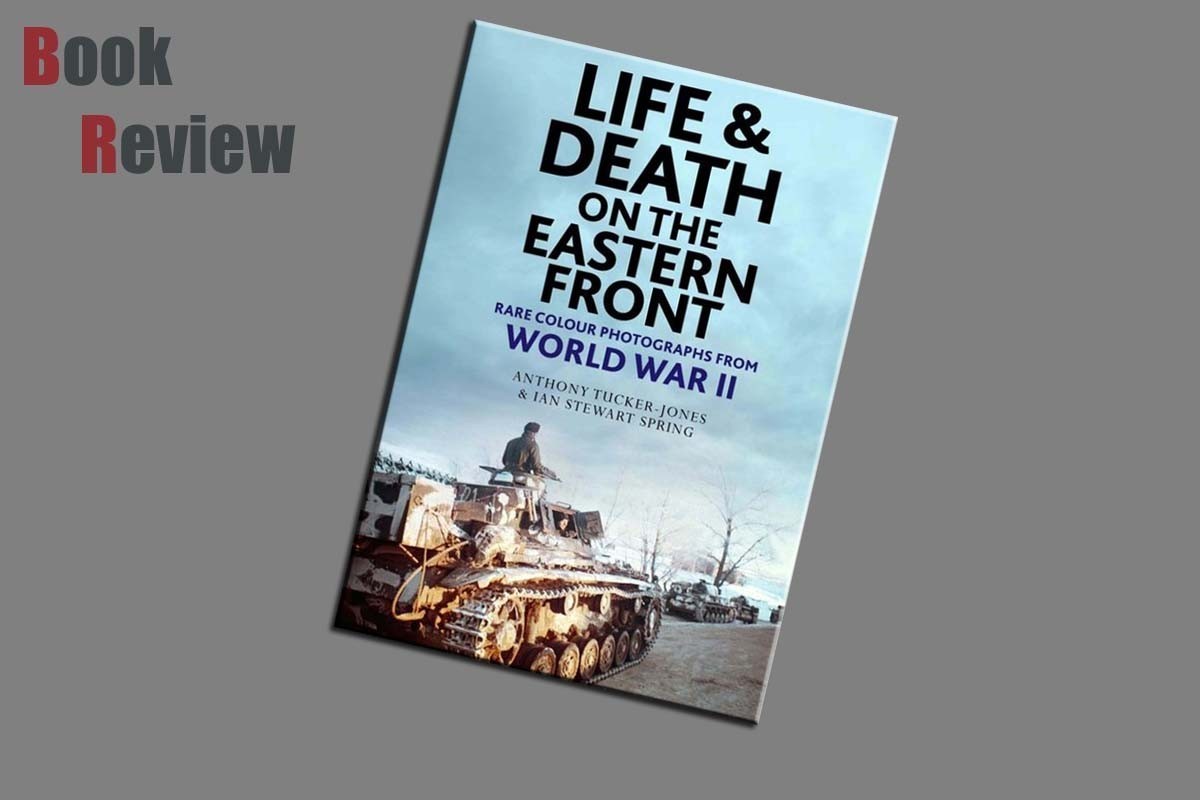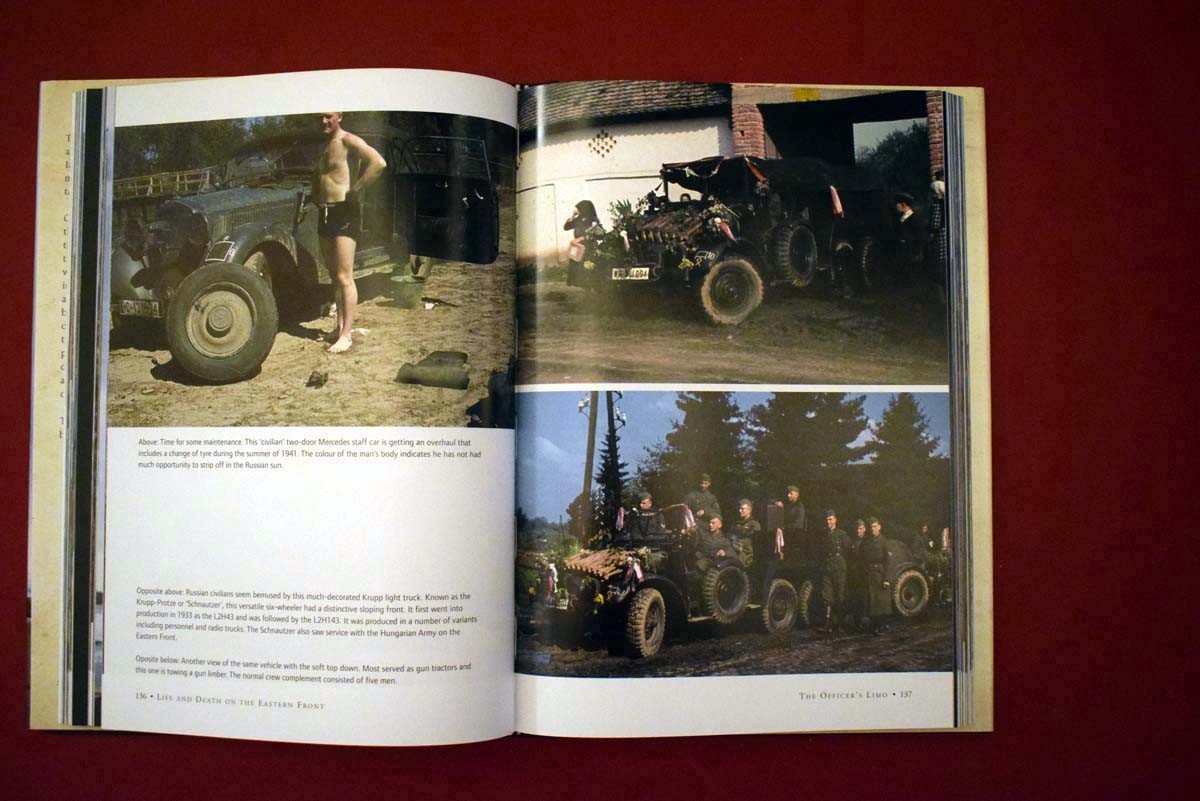
Introduction
The following introduction is taken from the Pen and Sword website:
This incredible visual record of life and death along the Eastern Front draws from the PIXPAST Archive, a collection built by Ian Spring of more than 32,000 original colour photographs taken between 1936 and 1946. Collated into three parts and organised thematically, the book begins with images of the ground war, including Hitler’s invasion of the Soviet Union and the tanks, vehicles, weaponry and infantry on both sides. Moving into the war in the skies, the images depict aircraft in flight and on the ground, the bombers, fighters, Luftwaffe personnel and the destruction wrought from battle. And finally, the images take us behind the lines, to the prisoners of war, partisans, medics, the daily lives and leisure activities of soldiers and civilians along the front and the impact of the harsh Russian winter.
With 250 photographs and text by renowned author and commentator Anthony Tucker-Jones, these images offer a rare, often surprising insight into the realities of the Second World War and people caught up in it, in vivid colour detail.
Review
This offering from Green Hill books and provided for review by Pen and Sword provides the viewer with a look at the German military during World War II in colour. This release is a hard backed book of 288 glossy pages and authored by Anthony Tucker-Jones and Ian Stewart Spring. The book is split into three main sections covering the ground war, war in the skies and behind the lines. These three sections are split into a further 22 sections. The book has a good introduction looking at the people whose task it was to photograph the German military in a flattering light throughout the war. It also looks at the equipment at the time it was used, and gives a background of the subject.
The section of this title looking at the ground war has some stunning quality photographs, with surprisingly informative captions. I am not going to say that I have sat and read every single caption, but what I did check was correct as far as I can see. The photographs are of an exceptional quality, showing very clear images of the subject matter, and while the weapons of war are of great interest to armour modellers, for me it is the images showing the men who served that I found most informative. From what I can see every aspect of the ground war has been covered in this section.
The next section looking at the air war provides a good number of images of both the German aircraft and captured or shot down Soviet aircraft. Ground defence weapons used to defend against the Soviet air force also get coverage in this section, which makes for a rounded history. Take the time here to take a look at the Me 323 Gigant, there are two photographs of this aircraft, one on the ground and one in flight and I believe these are the best photographs I have seen of this aircraft.
The final section of the book showing activities behind the lines is one that I found of most interest. It covers troops doing what they spend most of the war doing, which is breaks between combat. The images cover the full spectrum from personal care through to burying the dead and obtaining prepared meals to gathering food in the field. In addition to the German soldier at the rear, there are a number of images showing other Axis troops from the Romanian to the Italian and even provides images of the Kuban Cossacks. Images of note for various reasons are those showing an Italian war cemetery with a single cross and Italian helmet covering a batch of graves and the sea of helmets and crosses is huge; this particular images cover some of the 20,000 dead of General Garibaldi’s 8th army in Russia. There are also images of the retribution of German forces after some of their number had been attacked behind the lines. The most macabre and bizarre images I have found is of two horses that have frozen and German forces have turned them on the their back ends and used them to support telegraph wires.
Conclusion
When we think of colour photographs from World War II, we tend to think of the American forces as they have a vast number of images. This book showing the same war in high quality colour photographs from the German side on the Eastern front is an exceptional title. Most armour modellers tend to start building German armour of this period, and those that stay with that subject matter tend to excel in their details. This title provides a vast array of images that I feel are a must for any modeller with even the slightest interest in the Eastern front.
































